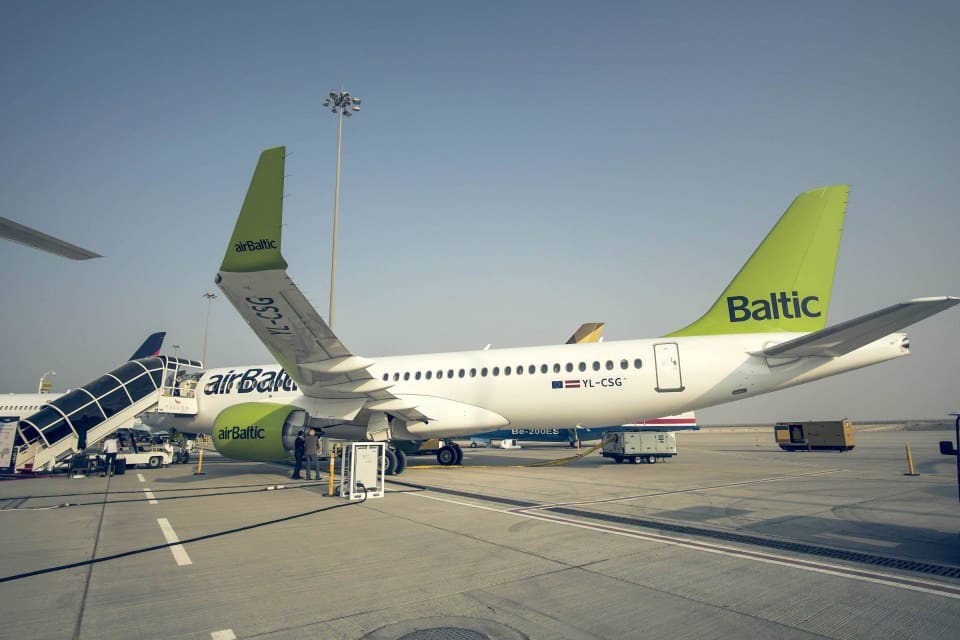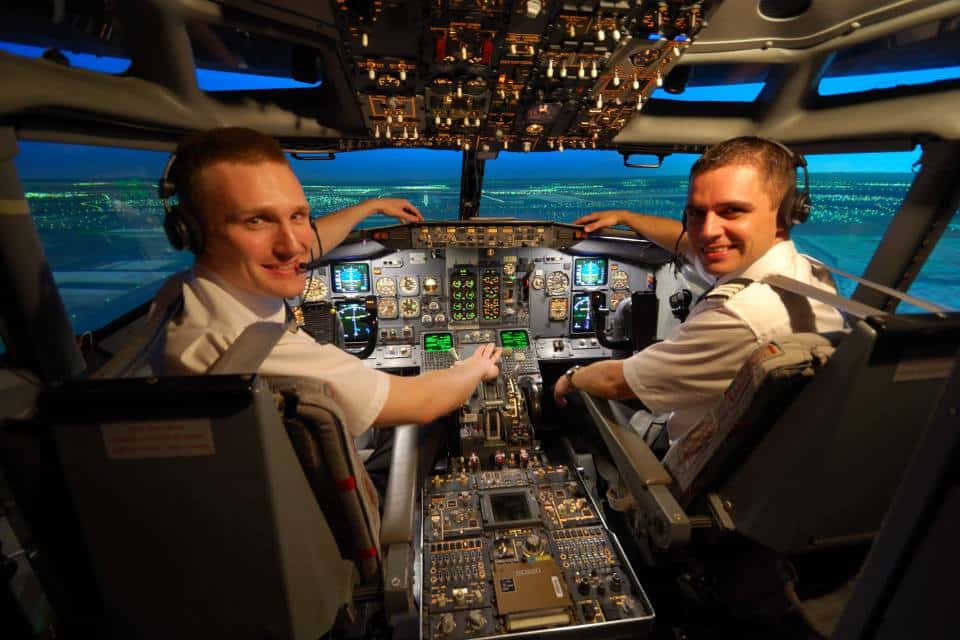Aviation
5 Best Places to Visit in Abu Dhabi by airBaltic.

The Latvian airline will continue to perform regular flights between the two cities also during the
next winter season, with flights restarting on October 28, 2018. The most attractive prices for the
tickets on next winter’s flights are now available on www.airbaltic.com. airBaltic has gathered five
tips that will inspire you to plan a trip to Abu Dhabi.
Abu Dhabi, perched between the stunning clear waters of the Arabian sea and the ever-changing
orange sands of the Western deserts, is known far and wide for its brilliant shopping opportunities,
Ferrari World, the most exhilarating water parks, exquisite restaurants and, of course, the Formula
1 itself. However, it hasn’t always been glitzy and modern – Abu Dhabi started out from very
humble beginnings. airBaltic introduces the taste of the traditional side of Abu Dhabi with these five
amazing experiences when visiting Abu Dhabi.
1. Sheikh Zayed Grand Mosque. Visiting the Sheikh Zayed Grand Mosque is a great place to
begin your trip to Abu Dhabi and learn a little its culture, heritage, history and traditions. The
Sheikh Zayed Grand Mosque is one of Abu Dhabi’s most iconic buildings: 82 domes, 1000
columns, 24-carat gold chandeliers and a capacity of 40 000 worshippers make it one of the
largest in the world. The mosque bears the name of the founder of the United Arab Emirates,
Sheikh Zayed, who was also laid to rest here. If you’re keen on exploring this truly traditional
highlight of Abu Dhabi, the Sheikh Zayed Grand Mosque is open to visitors daily from 9am to
10pm (except Friday mornings).
2. An Oasis in the desert. A day trip to the Oasis city of Al Ain is well worth the effort. Al Ain is fed
by natural springs and set among a date palm oasis, just a 2-hour drive from Abu Dhabi. The
garden city is also Sheikh Zayed’s hometown, and you can visit his childhood home, Al Jahili
fort. Constructed in 1890 to defend the city and protect the palm groves within, set in beautifully
landscaped gardens, it houses a tourist centre and a terrific photo exhibition by the British
explorer Sir Wilfred Thesiger that offers a fascinating insight into the UAE life in the 1940s.
3. Abu Dhabi’s special home for Falcons. Falconry is close to the heart and heritage of many
Emiratis, and is still a popular pastime for many. Traditionally, falcons were an important part of
the desert life, as these birds were trained to become excellent hunters. Today, it’s just a
recreational sport, but the skills and training of the birds are the same as in the past and are
passed down through generations. Having said that, a stop at the Abu Dhabi Falcon hospital is
a must. Opened in 1999, it has cared for over 42 000 falcons. Join a two-hour tour to see the
falcons up close, visit the hospital to see where the injured birds are treated or have come to
receive a falcon pedicure, watch these majestic birds soar in the open air aviary and take home
a souvenir photo with a falcon perched on your arm.
4. Desert Dune Bashing. Locals will tell you that you should never miss the chance to go on a
safari through the vast empty Western Desert. This is one of the most popular adventures for
tourists and locals, a mixture of fun and adventure, plus it serves as a lesson on the local
culture. You can choose to travel through the sands on a camel or in an air-conditioned 4×4.
Various safari options are available for half and full day tours, and staying the night in a luxury
desert camp is also a brilliant way to enjoy the Arabic hospitality and gaze at the most amazing
sky you have ever seen.
5. Have a Pearl of a Time. A great way to explore the warm clear waters of the Arabian Sea is to
set off on a pearling journey aboard the Jalboot, a traditional sailing vessel known in Arabia as a
Dhow. Once on the boat, you’ll be overwhelmed by the local hospitality and begin your journey
with a leisurely cruise along the coast of Abu Dhabi, with superb views of the city. Watch out for
herons, flamingos and other sea birds that make this unique area their home. While comfortably
seated on traditional cushions enjoying locally made Arabic coffee and dates, your Emirati guide
will tell you stories of how their forefathers spent their days diving for oysters in the hope of
finding the elusive and valuable pearls to trade. After a diving demonstration, you’ll be
encouraged to try your hand at opening a few oyster shells. Then search the oyster for a pearl,
which of course will be yours as a memory of your day if you are lucky enough to find it. The
pearling journey takes about two hours and departs daily.

Aviation
South Korea Introduces Cutting-Edge MRO Center for F-35 and IAI

South Korea is set to make waves in the aerospace industry with the establishment of a cutting-edge Maintenance, Repair, and Overhaul (MRO) hub for F-35 fighter jets and IAI (Israel Aerospace Industries) aircraft.
Central to this initiative is the specialization in converting Boeing 777-ERSF, colloquially known as the “Big Twin,” from passenger to freighter configurations. Under the terms of the agreement, IAI will spearhead the conversion of six B777-300ER and B777-200LR aircraft annually, commencing in 2024. This strategic move is in response to the anticipated surge in demand for wide-body freighter aircraft capable of long-haul flights.
Furthermore, South Korea’s forward-looking vision extends beyond aircraft conversion, with plans to establish a Lockheed Martin F-35 maintenance, repair, and overhaul depot at Cheongju Air Base by 2027. This strategic move not only enhances the operational readiness of South Korea’s air force but also positions the nation as a regional hub for F-35 maintenance expertise.
In preparation for this expansion, thirty Republic of Korea Air Force (ROKAF) engineers and technicians are slated to undergo intensive maintenance training in the United States in 2025, a testament to South Korea’s commitment to fostering local expertise and talent.
IAI’s visionary approach to certification and collaboration underscores the potential for transformative change. With plans for the 777-300ERSF certification process set to unfold in Israel, followed by the rigorous scrutiny of regulatory agencies such as the US Federal Aviation Administration (FAA), the stage is set for the ‘Big Twin’ to soar to new heights of success.
In partnership with esteemed entities like STK and Incheon International Airport Corporation, this collaboration promises to unleash a wave of benefits, amplifying the resilience and competitiveness of the Korean aviation sector while catalyzing job creation and economic prosperity.
Aviation
Lockheed Martin Expresses Interest in Joining AMCA Project

Lockheed Martin, a leading global aerospace and defense company, is demonstrating its dedication to strengthening collaborations with India’s research, industry, and academic sectors. With its rich experience in the aerospace industry and renowned for building some of the world’s most advanced jets, Lockheed Martin is now exploring opportunities to contribute to India’s aerospace sector, potentially providing a significant boost to aerospace technology in the country.
Randy Howard, Vice President of Global Pursuits at Lockheed Martin Aeronautics, recently underscored their interest in exploring “advanced transfer of technology opportunities” with Indian partners, signaling a proactive approach towards fostering technological exchange and advancement in the aerospace domain.
India has been at the forefront of fighter jet development since the 1970s, having produced its own cost-effective fighter jets and combat helicopters, while continually upgrading to maintain competitiveness on a global scale.
Lockheed Martin stands as a dominant force in the aircraft industry, renowned for developing cutting-edge planes like the F35 and F22, some of the most advanced fighter jets globally. They’ve also contributed to projects like the South Korean KF21 aircraft for defense purposes through collaborations.
Now, Lockheed Martin has set its sights on India’s defense sector manufacturing processes, expressing interest in partnering with India on its most anticipated project, the Advanced Medium Combat Aircraft (AMCA), likely to be a 5th generation fighter jet for the Indian military.
Their proposed collaboration could involve a spectrum of advanced technologies, including the Auto Ground Collision Avoidance System (Auto GCAS), a life-saving technology that intervenes to prevent ground collisions, thus significantly enhancing flight safety for Indian pilots.
Lockheed Martin is extending its expertise to design and develop an indigenous cockpit for the F-21 fighter jets, which India is procuring. This collaboration with Tata also includes the development of fighter jet wings. Established in 2023, this partnership adopts a “Ground Floor Design” strategy aimed at equipping India with an in-depth comprehension of 5th-generation cockpit technology and Man-Machine Interface (MMI) systems.
As India’s Fighter jet program advances with finalized aircraft frame and engine prototypes, Lockheed Martin has expressed interest in joining the project. They see a groundbreaking opportunity in cooperative 5th Generation Fighter Development, potentially expediting the AMCA program’s progress through technology and expertise sharing.
Furthermore, Lockheed Martin is keen on collaborating on large-wing, jet-powered UAV platforms, which could enhance India’s unmanned aerial capabilities.
While discussions are ongoing, and specific collaboration details await finalization, this initiative represents a potentially transformative stride in India’s aerospace self-reliance journey and Lockheed Martin’s strategic engagement with the Indian market.
Aviation
Can Airline Seat Cushions Be Used As Life Jackets?

In the event of an aircraft ditching into water, there’s a common question: Can aircraft seats serve as an alternative to life jackets for flotation? The answer lies in understanding their respective functions.
While seat cushions can provide some buoyancy in water, they are not intended nor certified to function as life jackets. Their primary purpose is to offer cushioning for passengers during flight. On the other hand, life jackets are meticulously engineered to keep individuals afloat in water, equipped with buoyancy materials, secure straps, and reflective elements for visibility. They offer numerous advantages over mere cushions.
While a seat cushion might offer temporary assistance in staying afloat, it’s not a dependable substitute for a proper life jacket during an emergency. It’s crucial to utilize approved safety equipment when near bodies of water. A life jacket, designed to keep a person buoyant for extended periods, offers the rigidity needed for prolonged flotation and allows for easy movement of the arms to navigate effectively.
What fabric is used in aircraft seats?
Seats are meticulously designed to fulfill multiple purposes, ensuring passenger comfort, safety, and protection from unforeseen circumstances like fires and accidents. A typical design incorporates an aluminum frame with blocks of polyurethane foam affixed to it. Additionally, a layer of fire-resistant fabric, such as Kevlar or Nomex, is often applied over this framework, topped with a layer of cloth or leather.
Leather seats, while luxurious, are more expensive compared to traditional cloth seats. The majority of fabrics used in seat upholstery contain at least 90% wool fiber, with the remainder typically consisting of polyamide (nylon). Wool stands out as the primary fiber chosen for commercial airline seating fabric due to its desirable properties and suitability for such applications.
What is the lightest economy seat?
In recent times, airlines have been downsizing seat dimensions to accommodate more passengers, resulting in reduced cushion length and leg space. This contrasts with earlier times when airlines offered more generously cushioned seats and ample amenities.
According to Recaro Seats Company, their SL3710 model represents the lightest economy class seat available, weighing in at a mere 8 kg (17.6 lb.), setting a new standard in aircraft seating.
For individuals weighing more than 350 pounds, fitting into a standard economy-class seat can be a challenge due to the narrower dimensions. Economy seats, also referred to as “coach,” “standard,” or “main cabin” seats, typically range from about 40 to 48 centimeters in width, further emphasizing the need for more accommodating seating options.





























